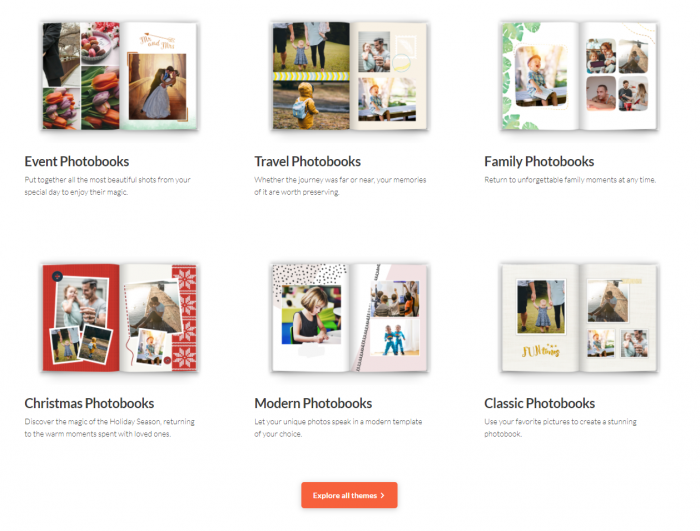While the entire business world is plagued by the economic crisis, Amazon suddenly reported sales growth of 37% over the last year. And one of the main reasons why Amazon and other online platforms got more attention, of course, is related to COVID-19 lockdown measures that make more people buy everything without leaving home. The latest data confirms this: the recent Deloitte survey shows that 74% of consumers plan to shop online during the Thanksgiving period (end of November) that’s 12% higher than in 2019.
Source: Deloitte
While the sudden surge in consumer demand for e-commerce services may be triggered by the isolation measures, the new online habit is gaining acceptance among customers. However, to be successful in online sales, it is not enough to create a template website, fill it with items, and wait for the miracle. Requirements for online stores are constantly growing. To satisfy them, let’s follow the latest and the most useful e-commerce trends.
Minimalism and clear design
Your customers should like an online store literally at first sight. If people notice a bug or cannot find the product in 1-2 clicks, or it takes a long time for the page to load, they will simply close the tab and choose your competitors. So, 2021 e-commerce trends will focus on minimalism, simplicity of the interface, and the predominance of visual elements over the text description. The cleanness of a minimalistic layout can never distract, while bright accents direct attention where it’s needed.

The rise of AI-powered solutions
Retailers already use machine learning, deep learning, and other technologies based on Artificial Intelligence as it allows them to generate leads, predict customer behavior, and offer the most suitable products or services. Business Wire claims that around 70% of all online shoppers are likely to buy products based on AI recommendations.
In particular, AI tools fit perfectly for stores that sell personalized items such as photobooks: by monitoring search patterns and analyzing customer’s preferences, AI-driven algorithms decide what elements and pictures should be included in the final version of a book. As a result, users can get a product that fully meets their expectations without a need to contact a consultant.
Personalized offers
Personalization is based on a comprehensive analysis of customer information, including demographics, online behavior, and purchase history. More than half of the users agree that personalized online experience influences their buying decision. Customers expect individualized offers based on previous purchases and activities, rather than standard emails that don’t match their interests. All of us already experienced e-blindness when most stock mails, messages, and notifications remain unread.
Take advantage of this trend to help customers choose your store over others again. This may include individual discounts and loyalty points, personalized recommended items, and providing multiple communication ways with the support team.
Eco movement
According to hbr.org research, about 65% of consumers prefer buying products from brands that support the environment. People are increasingly interested in products made in eco-friendly ways and easy to recycle. Besides this, some environmentally friendly initiatives include:
- natural packaging,
- adding products that are focused on preserving and protecting the environment,
- using recyclable supplies.
Local and cross-border delivery
Customers increasingly search for products online outside of their home country. As a consequence, they want to receive a product as quickly as possible and have an option to track it. Flexible shipping options attract and maintain customer loyalty, while affordable international and local delivery can attract more potential customers. If a product can be delivered even on the same or the next business day, we recommend including this information on the product card. This can become your competitive advantage as users look for the best service for the same price.
Multi-channel approach
The prevalence of mobile internet surfing over desktop was noticed 5 years ago. If initially the main number of visits was caused by the boom of social media, games, and instant messengers, now people are getting more active in ordering goods and services online. According to TechJury, the global share of mobile commerce (or, m-commerce) should reach 72.9% globally by 2021. Just imagine, it’s almost 3/4 of all e-commerce deals.
Easier payment methods
Make sure users have as few barriers as possible to finalize the purchase. For example, when shopping with a foreign company, everyone expects to pay through a preferred local payment provider. Most stores already accept digital wallets, card payments, and instant transfers (depending on the country). Due to continuous m-commerce growth, ApplePay, GooglePay, and SamsungPay payment methods can be found in almost every online store.
Bottom line
The latest data clearly shows that in 2021 e-stores will continue the automation of processes and giving customers more personalized offers as well as the feel of controlling each step of online shopping. While some of the trends provide a huge value-add for each industry, others might be out of touch with your particular audience. For this reason, we haven’t included complex tech ideas like AR/VR showrooms, or drone delivery as they may be inefficiently costly for some businesses at this moment. Instead of сhasing all trends at once, put customer needs first.




